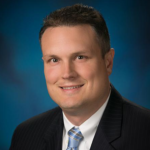by Bobby Ott and Quintin Shepherd

 This article originally appeared in the spring 2023 issue of TASA INSIGHT. Dr. Bobby Ott has served as the superintendent of Schools for Temple ISD since 2018. TISD has earned state and national recognition in the areas of academic/technology innovation, financial solvency, student programming, staff retention efforts and business partnerships. Dr. Quintin Shepherd is superintendent of Victoria ISD and works as adjunct professor at University of Houston-Victoria. He has served as a superintendent for the past 19 years in three states.
This article originally appeared in the spring 2023 issue of TASA INSIGHT. Dr. Bobby Ott has served as the superintendent of Schools for Temple ISD since 2018. TISD has earned state and national recognition in the areas of academic/technology innovation, financial solvency, student programming, staff retention efforts and business partnerships. Dr. Quintin Shepherd is superintendent of Victoria ISD and works as adjunct professor at University of Houston-Victoria. He has served as a superintendent for the past 19 years in three states.
It is said that Albert Einstein could explain the theory of relativity to a barmaid on a napkin. We cannot source this to be true, but it does make for a wonderful image to start this article. This is exactly how I felt (Quintin as the barmaid) while sitting with Dr. Bobby Ott at a National Council of Education Research and Technology conference. It was during a break between speakers that he leaned over and started talking about communication and identity. I asked a bunch of questions in rapid fire, and before long it was time for the next speaker. Within minutes, he sketched out what he was talking about on a napkin! My response was, “We need to write about this.” What follows is a brilliant communication framework that may be new to you and something you will be able to incorporate into your communication.
Superintendent communication is one of the most critical superpowers in moving school systems forward. Effective superintendents have honed both communication skills and communication strategies to develop this superpower. What follows is more of a strategy and not a skill, and hopefully, you will be able to incorporate this new strategy as soon as you are finished reading! Remember, strategies beget tactics, so we will break this strategy into two tactical parts: The Power of Addition and The Power of Multiplication. Both tactics are equally important and serve the school district well. Unfortunately, many of us have not been strategic or deliberate in our application of these communication superpowers. Let us explain, but before we do …
A basic math primer might be helpful as we jump in. Addition is the process of combining several individual items together to form a new total. Multiplication, however, is the process of using repeated addition and combining the total number of items that make up equal-sized groups. An example, if Bobby passes an idea to Q, this is the rule of addition, 1+1=2. One person had an idea and shared it with another, and now they both have an idea. If Bobby then shares it with another person but Q does not, the formula is 1+1+1=3. Addition. But if Q also shares the idea with another along with Bobby, the equation becomes 2×2=4. Multiplication. In these two different examples, Bobby did not change, but Q did. Let us explore this further.
The Power of Addition is exactly what it suggests — compounding or adding to an existing message. This type of communication is important and valuable but has some limitations. The superintendent is the author of such communications, and in many cases, viewed as the expected “paid champion” telling the story. These stories are also told by additional staff members, communications staff, senior leaders, campus leaders, and teachers. No matter, these are all paid champions, expected to sing the school district’s praises and communicate the needs clearly. There is an expectation, even prior to delivering the communication, that it will include a message infused with knowledge and positivity. Due to these predetermined expectations, traction is limited. This news travels much slower and could even be met with suspicion because the author (us) is perceived as an inherent advocate with natural biases.
Examples of superintendent communication that would qualify for a Power of Addition approach would include periodic updates, less sensitive topics, and purely informational sessions such as your annual state of the district presentations, celebratory topics/awards, and even redundancy plans that provide reassurance of continuity. These would be delivered by you — the superintendent — and usually transpire in customary places such as faculty meetings, civic organizations, or community groups. As a sitting superintendent, we challenge you to evaluate an entire year’s worth of presentations and begin sorting these presentations into your Power of Addition container. Preparation and expectation for this type of communication are far different from Power of Multiplication, and quite honestly, the form most used.
The Power of Multiplication, by comparison, is very different. The author is usually someone two or more degrees away from the school system; however, you as the superintendent strategically plant these authors with information. These messages are communicated by external groups (not the superintendent) and viewed with more authenticity and less subjectivity. They are not your “paid champions” of the school system. These could be parents, business leaders/recruiters, pastors, realtors, etc. The traction gained from these authors is exponentially faster throughout the community, carrying more weight and less suspicion or debate from opposers.
Sitting superintendents, please take note of this approach. Survey your community and determine who the top selling realtors are, the largest businesses, banks, most active churches, and parent groups. Then, identify their key leaders or how they organize. For example, in some communities you will find a Board of Realtors, Ministerial Alliance (multiple pastors who gather), Chamber of Commerce (multiple businesses gather), or you can even set up your own gatherings such as bringing together HR recruiters of various businesses to the table. Then you, as the superintendent, provide them with the information rather informally, including digital links and hard copy handouts — turn them loose and watch them multiply the messages. These messages travel quickly across the community and are viewed as a more reliable source to a variety of audiences.
So, what messages would benefit the most from the Power of Multiplication you ask. We would say messages around sensitive topics such as bond or tax ratification elections (community asking), rezoning, crisis planning, or even new, large-scale district initiatives (blended learning, improved safety/security measures etc.). When you engage in informal, more personal sessions with these groups, they are empowered, they ask questions they expect you to answer and then they become your multipliers to parents, families new to the area and community members who are not attached directly to the school system. Your message fills the church seats, Little League fields, business tours, and living rooms of the community. This is the Power of Multiplication! As a new or sitting superintendent, the Power of Multiplication approach is a worthy exercise because your message takes place in their various venues as opposed to the Power of Addition approach — where your message takes place in your venues or those that are primarily standardized.
Across the nation, we are facing a politicizing of public education, and the media is using both addition and multiplication of the message. To restore the positivity and integrity of this institution called public education, we must also embrace both the Power of Addition and the Power of Multiplication. Let us drill in on this idea a little further because none of us are in the same position as traditional or social media when it comes to scope and reach. We believe the communication strategic advantage comes from something we learned in elementary math class. Since we are talking about addition and multiplication, it makes sense to remember the order of operations rules. Always start with multiplication before addition … which begs the question, why don’t we do this when we are thinking about communication strategies?
As you think about this concept and apply some of the tactics you have picked up, we encourage you to focus and then refocus your efforts on the power of multiplication before using the power of addition. Determine the purpose of your message, then the speed at which you need it to travel, and the level of sensitivity, and then deliberately select your communication approach: Power of Addition, Power of Multiplication, or both. Cast a keen eye over your list of members in each container, put together your plan, and set up your delivery schedule in a way that backs into your desired timeline for message reach. Taking this deliberate approach can not only help move your school system forward, and control the narrative, but also restore credibility back to a profession that has been tarnished by grand generalizations.
When it comes to your communication strategies and tactics, remember this quote from George Bernard Shaw, “The single biggest problem in communication is the illusion that it has taken place.” Accept the reality that your communications skills, strategies, and tactics should be ever-evolving. As we think about all our brother and sister superintendents, we know amazing things are happening in every one of our campuses around the great state of Texas, and by focusing on communicating our message, this is how we shine a positive light on our systems and bring the public back to public education.
We recognize we did not invent this notion of addition and multiplication, but we are trying to name it within a leadership communication framework. Stories make for great remembering tools, so we will pivot to a close with a story and a song. After Mother Teresa accepted the Nobel Peace Prize, a reporter challenged her about the seeming futility of her efforts. “Mother, you are 70 now. When you die, the world will be as it was before. What has changed after so much effort?” Mother Teresa responded (with a smile), “You know, I never wanted to change the world. I have only tried to be a drop of pure water … Does that seem like a small thing to you? Why don’t you try, too, to become a drop of pure water? Then there will be two of us already.” The reporter was silent. “Are you married?” The reporter replied, “Yes.” “Tell your wife about it, too, and then we are already three. Do you have children?” “Three children, Mother.” “Then tell your children also and then we are already six.” Mother Teresa understood the power of addition and multiplication. Finally, if you need a theme song or “walk-up” music for this strategy, check out “One Voice” by The Wailin’ Jennys. They get it too.
In the opening paragraph we wrote “communication and identity,” and we bet you are wondering how these communication strategies and tactics are part of a bigger picture about the difference between a district’s reputation and a district’s personality. This was sketched out by Dr. Bobby Ott on another napkin at the NCERT Conference. Alas, we have run out of room, so you are just going to have to wait for a future INSIGHT article!
MORE LEADERSHIP PERSPECTIVESWanted: Your Leadership Perspective
If you’re an experienced school leader and TASA member with some leadership perspective to share, email Dacia Rivers with a short description of your proposed article, and we may publish it in a future issue of INSIGHT and/or on the TASA website.






